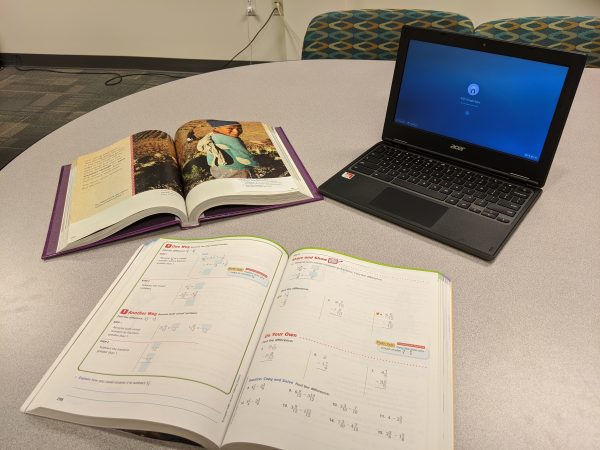
The start of a new school year is less than a month away for many families in Alaska. There is still some uncertainty about what the start of school will look like as the number of positive COVID-19 cases continue to increase statewide.
But several Alaska teachers from around the state said they are cautiously optimistic.
Ben Walker teaches science at Romig Middle School in Anchorage. He said the new school year will be much different than distance learning last spring, now that schools have had time to prepare.
“The spring was not remote learning, it was not distance learning, it was crisis learning,” he said. “Since then, people have been spending a lot of time designing this new experience, and I think that anyone that’s basing their decisions on the 4th quarter of last year, they’re way off.”
The Anchorage School District will start the year with online learning beginning August 20 and reassess just before Labor Day in September.
In Fairbanks, the district decided Monday night that it will also begin school online only on August 20.
Gwendolyn Brazier is a music teacher in the Fairbanks North Star Borough School District. She said the district was already implementing more personalized learning styles which has helped with the shift to online. But she said taking away grading in the spring was a stumbling block.
“We had a lot of kids just drop off the grid when they realized that grades didn’t matter for 4th quarter,” she said. “With us starting this new year, we’re starting at a really great place where we have accountability for the kids and the teachers, and we are able to all work together to figure out something that works.”
But, Brazier said she is still concerned about connecting with students in rural areas without devices or access to internet connections.
That’s also a concern for Pamela Garcia, a special education resource teacher at Auke Bay Elementary School in Juneau.
The school district there is planning to start the year in a hybrid model with students attending classes in-person part time.
Garcia said the schools where she works have been able to identify all of the students they had trouble reaching in the spring. She said they are using the summer to find ways to keep in touch with them.
“I have a lot of confidence that we’re going to be able to reach all of the kids and I know that everyone is working really hard on that right now,” she said. “I think with that lead time, it’s going to be a completely different ball game than it was during the spring.”
The teachers said despite some remaining uncertainty, they are working to develop flexible lesson plans and teaching methods that work for students, families, and the rest of their communities.
Across the state, school districts continue to develop and finalize reopening plans consistent with local health conditions. Many plans remain works in progress.
Here are the reopening plans, some are proposed and some are decided, for a sampling of Alaska’s largest school districts:
Anchorage School District – 46,000 students: online-only
Mat-Su Borough School District – 20,000 students: five day school week in-person with regular hours
Fairbanks North Star Borough School District – 13,000 students: online-only
Kenai Peninsula Borough School District – 9,000 students: mixed preparations based on geographic area.
Juneau Borough School District – 5,000 students: planning for a hybrid-model school start with students attending class in-person part time.
Lower Kuskokwim Schools – 4,000 students: projecting a hybrid-model school start with students attending class in-person part time.
Ketchikan Gateway Borough Schools – 2,000 students: proposed a hybrid-model school start with students attending class in-person part time.
View a spreadsheet tracking plans from every district in the state from Alaska’s education department here.




